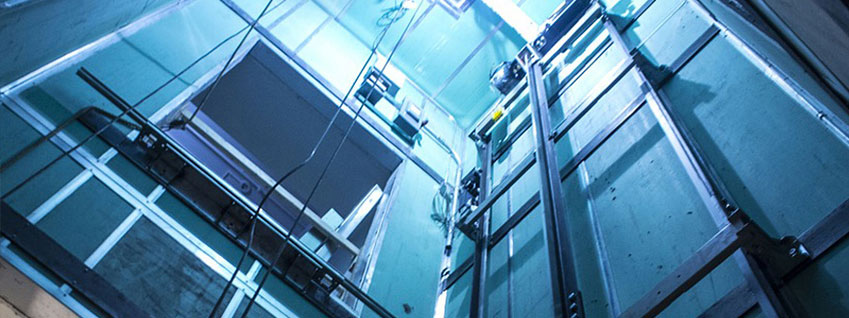We Maintain Lifts to the Highest Possible Standards: Reliable Solution for All Lift Kind
We Maintain Lifts to the Highest Possible Standards: Reliable Solution for All Lift Kind
Blog Article
Looking Into the World of Elevators: Usual Concerns Encountered by Numerous Lift Mechanisms
As we browse with the upright transport systems of modern buildings, lifts stand out as a crucial element of our everyday lives. From hydraulic elevators to traction systems and machine-room-less designs, each lift kind comes with its set of typical issues.
Hydraulic Elevators
Hydraulic elevators, often chosen for low-rise structures, make use of fluid pressure to manage the activity of the elevator cars and truck (lift repair companies). This mechanism entails a hydraulic pump pushing oil right into a cyndrical tube, triggering the elevator to relocate the desired direction. While hydraulic lifts are known for their quiet and smooth operation, they do include their own collection of common problems
One common issue with hydraulic elevators is oil leak. The seals in the hydraulic system can wear gradually, leading to oil seepage. If left unaddressed, this not just develops a mess but can likewise affect the lift's performance. Furthermore, problems with the control system, such as malfunctioning valves or a malfunctioning pump, can trigger disturbances in the elevator's motion.
Routine upkeep and prompt repair services are necessary to make certain the smooth performance of hydraulic lifts. By dealing with these typical issues proactively, building owners can minimize downtime and make sure the safety and security and performance of their upright transport system.
Grip Lifts
When considering vertical transportation systems in buildings, one more typical type besides hydraulic elevators is the traction elevator. Grip elevators operate using a system of ropes and weights that relocate the lift vehicle by grasping onto the hoist ropes. This mechanism enables smoother and faster vertical transportation contrasted to hydraulic systems.
One of the common issues faced by grip lifts is rope wear. The continuous activity of the ropes within the traction system can result in deterioration over time, potentially causing the elevator to malfunction or come to be unsafe for use. Routine assessments and upkeep of the ropes are vital to ensure the lift's appropriate performance and security.
One more issue that grip elevators might encounter is connected to the control system. Troubles with the control system can lead to issues such as unpredictable motion, delays in action times, or even full shutdowns. Normal screening and maintenance of the control system are critical to avoid such concerns and guarantee the elevator's reliability.
Machine-Room-Less (MRL) Elevators

One of the vital elements of MRL elevators is the portable gearless grip device that is mounted within the hoistway. This device efficiently drives the lift automobile without the need for large equipment located in conventional grip elevators. In addition, MRL elevators typically utilize a weight system to stabilize the vehicle, more enhancing their power efficiency.
In spite of their advantages, MRL elevators might encounter challenges associated with repair and maintenance due to the restricted room for equipment installation. Availability for servicing parts within the shaft can be restricted, requiring specialized training for service technicians. Correct maintenance timetables and regular evaluations are vital to make certain the ongoing smooth procedure of MRL lifts.
Overloading and Weight Limit Issues
Are elevators equipped to deal with excess weight loads successfully and securely? Overloading and weight limitation problems are crucial issues in elevator procedures. Lift producers style lifts with certain weight capabilities to make sure guest security and devices longevity. Exceeding these weight restrictions can bring about numerous troubles, consisting of mechanical failures, hold-ups, and safety and check my source security hazards.
When elevators are strained, it puts extreme strain on the motor, wires, and other parts, possibly triggering malfunctions or break downs. If they discover excess weight, safety systems such as sensors and overload sensing units are in location to protect against lifts from moving. In addition, going beyond weight limitations can cause enhanced energy intake and wear and tear on the lift system.
To minimize overwhelming issues, building supervisors ought to prominently show weight limits in elevators and enlighten passengers on the importance of adhering to these limitations - lift repair companies. Regular upkeep checks by qualified professionals can also aid make certain that lifts are running within risk-free weight specifications. By dealing with overloading and weight limit concerns proactively, building proprietors can boost elevator safety and security and efficiency
Electric System Failures
Surpassing weight restrictions in lifts can not just result in mechanical concerns yet likewise potentially contribute to electric system failings within the lift facilities. Electrical system redirected here failings are an essential issue in lift procedure, as they can create unanticipated shutdowns, breakdowns, or perhaps security threats. One common electric issue is the getting too hot of components because of too much current circulation caused by overwhelming the elevator past its capability. This can bring about harm to the control, motor, or wiring systems, causing pricey fixings and downtime.
Regular maintenance and inspections are important to recognize and resolve prospective electric concerns promptly, making certain the secure and effective procedure of lift systems. By sticking to weight restrictions and performing routine electrical system checks, building owners can alleviate the danger of electric failings in lifts.
Verdict

Hydraulic lifts, commonly favored for low-rise structures, make use of fluid pressure to regulate the movement of the elevator cars and truck.When thinking about vertical transportation systems in buildings, an additional usual kind aside from hydraulic elevators is the traction elevator. Traction lifts run using a system of ropes and counterweights that move the elevator cars and truck by gripping useful source onto the hoist ropes. Unlike traditional lifts that need a different maker space to house the devices, MRL lifts incorporate most of the parts within the shaft, eliminating the need for a specialized device area.In verdict, lifts encounter usual problems such as hydraulic breakdowns, grip system failings, and electric system problems.
Report this page